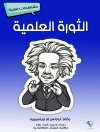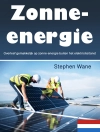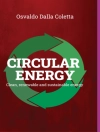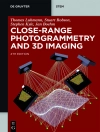Written by major contributors to the field who are well known within the community, this is the first comprehensive summary of the many results generated by this approach to quantum optics to date. As such, the book analyses selected topics of quantum optics, focusing on atom-field interactions from a group-theoretical perspective, while discussing the principal quantum optics models using algebraic language. The overall result is a clear demonstration of the advantages of applying algebraic methods to quantum optics problems, illustrated by a number of end-of-chapter problems.
An invaluable source for atomic physicists, graduates and students in physics.
Содержание
Preface IX
1 Atomic Kinematics 1
1.1 Kinematics of an Atom with Two Energy Levels 1
1.2 Dicke States 5
1.3 Atomic Coherent States 7
1.4 Squeezed Atomic States 12
1.5 Atoms with n > 2 Energy Levels 17
1.5.1 Systems with n Energy Levels 17
1.5.2 Systems with Three Energy Levels 20
1.6 Problems 21
2 Atomic Dynamics 23
2.1 Spin in a Constant Magnetic Field 23
2.2 A Two-level Atom in a Linearly Polarized Field 24
2.2.1 The Rotating Wave Approximation 24
2.3 A Two-level Atom in a Circularly Polarized Field 26
2.4 Evolution of the Bloch Vector 28
2.5 Dynamics of the Two-level Atomwithout the RWA 29
2.6 Collective Atomic Systems 33
2.7 Atomic System in a Field of a Single Pulse 39
2.8 Problems 42
3 Quantized Electromagnetic Field 45
3.1 Quantization of the Electromagnetic Field 45
3.2 Coherent States 47
3.3 Properties of the Coherent States 48
3.4 Displacement Operator 51
3.5 Squeezed States 54
3.6 Thermal States 58
3.7 Phase Operator 58
3.8 Regularized Phase Operator 63
3.9 Phase Distribution 65
3.10 Problems 69
4 Field Dynamics 71
4.1 Evolution of a Field with Classical Pumping 71
4.2 Linear Parametric Amplifier 72
4.3 Evolution in the Kerr Medium 75
4.4 Second Harmonic Generation in the Dispersive Limit 77
4.5 Raman Dispersion 79
4.6 Problems 81
5 The Jaynes–Cummings Model 83
5.1 The Interaction Hamiltonian 83
5.2 The Spectrum and Wave Functions 85
5.3 Evolution Operator 87
5.4 The Classical Field Limit 90
5.5 Collapses and Revivals 92
5.5.1 The Dispersive Limit 93
5.5.2 Exact Resonance 95
5.6 The JCM with an Initial Thermal Field 97
5.7 Trapping States 99
5.8 Factorization of the Wave Function 101
5.9 Evolution in Field Phase Space 104
5.10 The JCM without RWA 105
5.10.1 Diagonalization of the Hamiltonian 106
5.10.2 Atomic Inversion 109
5.10.3 Classical Field Limit 110
5.11 Problems 111
6 Collective Interactions 113
6.1 The Dicke Model (Exactly Solvable Examples) 113
6.2 The Dicke Model (Symmetry Properties) 118
6.3 The Dicke Model (Symmetric Case) 121
6.4 The Zeroth-Order Approximation 122
6.4.1 The Weak Field Case 122
6.4.2 The Strong Field Case 123
6.5 Perturbation Theory 124
6.6 Revivals of the First and Second Orders 128
6.6.1 Revivals of the Second Order 130
6.7 Atom-Field Dynamics for Different Initial Conditions 132
6.7.1 Initial Number States 132
6.7.2 Coherent and Thermal Fields 134
6.8 Three-Level Atoms Interacting with Two Quantum Field Modes 136
6.9 Problems 141
7 Atomic Systems in a Strong Quantum Field 143
7.1 Dicke Model in a Strong Field 143
7.2 Factorization of the Wave Function 146
7.3 Evolution in Phase Space 148
7.4 Dicke Model in the Presence of the Kerr Medium 152
7.5 Generation of the Field Squeezed States 154
7.6 Coherence Transfer Between Atoms and Field 157
7.7 Resonant Fluorescence Spectrum 159
7.8 Atomic Systems with n Energy Levels 162
7.8.1 Cascade Configuration _ 167
7.8.2 _-Type Configuration 168
7.8.3 V-Type Configuration 169
7.9 Dicke Model in the Dispersive Limit 169
7.10 Two-Photon Dicke Model 172
7.11 Effective Transitions in Three-Level Atoms with _ Configuration 180
7.12 N-Level Atoms of Cascade Configuration 183
7.13 Problems 186
8 Quantum Systems Beyond the Rotating Wave Approximation 189
8.1 Kinematic and Dynamic Resonances in Quantum Systems 189
8.2 Kinematic Resonances: Generic–Atom Field Interactions 192
8.3 Dynamic Resonances 198
8.3.1 Atom–Quantized Field Interaction 203
8.3.2 Atom–Classical Field Interaction 204
8.3.3 Interaction of Atoms with the Quantum Field in the Presence of Classical Fields 206
8.4 Dynamics of Slow and Fast Interacting Subsystems 212
8.4.1 Effective Field Dynamics 214
8.4.2 Effective Atomic Dynamics 215
8.5 Problems 216
9 Models with Dissipation 217
9.1 Dissipation and Pumping of the Quantum Field 217
9.2 Dicke Model with Dissipation and Pumping (Dispersive Limit) 219
9.3 Dicke Model with Dissipation (Resonant Case) 223
9.3.1 Initial Field Number State 226
9.3.2 Initial Field Coherent State 226
9.3.3 Factorized Dynamics 229
9.4 Strong Dissipation 231
9.4.1 Field–Field Interaction 234
9.4.2 Atom–Field Interaction 235
9.5 Problems 235
10 Quasi-distributions in Quantum Optics 237
10.1 Quantization and Quasi-distributions 237
10.1.1 Weyl Quantization Method 237
10.1.2 Moyal–Stratonovich–Weyl Quantization 240
10.1.3 Ordering Problem in L(H) 241
10.1.4 Star Product 242
10.1.5 Phase–Space Representation and Quantum–Classical Correspondence 243
10.2 Atomic Quasi-distributions 245
10.2.1 P Function 246
10.2.2 Q Function 247
10.2.3 Stratonovich–Weyl Distribution 250
10.2.4 s-Ordered Distributions 251
10.2.5 Star Product 252
10.2.6 Evolution Equations 255
10.2.7 Large Representation Dimensions (Semiclassical Limit) 256
10.3 Field Quasi-distributions 262
10.3.1 P Function 262
10.3.2 Q Function 264
10.3.3 Wigner Function 265
10.3.4 s-Ordered Distributions 266
10.4 Miscellaneous Applications 269
10.4.1 Kerr Hamiltonian 269
10.4.2 The Dicke Hamiltonian 271
10.5 Problems 276
11 Appendices 279
11.1 Lie Groups and Lie Algebras 279
11.1.1 Groups: Basic Concepts 279
11.1.2 Group Representations 281
11.1.3 Lie Algebras 282
11.1.4 Examples 284
11.2 Coherent States 294
11.2.1 Examples 295
11.3 Linear Systems 299
11.3.1 Diagonalization of the Time-independent Hamiltonian 301
11.3.2 Evolution Operator 302
11.3.3 Reference Formulas 303
11.4 Lie Transformation Method 304
11.5 Wigner d Function 306
11.6 Irreducible Tensor Operators 311
References 315
Index 321
Об авторе
A.B.Klimov is a professor at the Department of Physics, University of Guadalajara, Mexico. Professor Klimov obtained his academic degrees from the Moscow Institute of Physics and Technology in 1991, and worked at the Lebedev Physical Institute, Moscow, and at the National University of Mexico (UNAM) before accepting his present appointment at the University of Guadalajara. Professor Klimov is the author of over 100 scientific publications, including two book chapters.
S.M.Chumakov is a physics professor at the University of Guadalajara, Mexico. He received his Ph D degree in theoretical and mathematical physics from the Lebedev Physical Institute, Academy of Science of the USSR, Moscow, in 1986. Professor Chumakov worked at the Central Bureau for Design of Unique Devices, Moscow, and at the National University of Mexico (UNAM) before starting his present appointment at the University of Guadalajara in 1998. He has authored over 80 scientific publications, including two book chapters.











